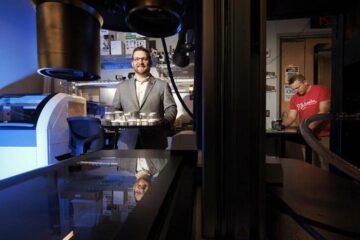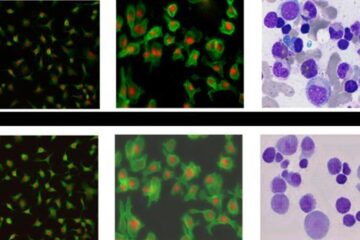Important mechanism identified in the formation of blood vessels

The key to many medical problems, like preventing tumour development, is therefore to obstruct the spread of the blood vessels. Research scientists at Karolinska Institutet have now discovered a heretofore unknown mechanism for how the body links together its blood vessels.
New blood vessels are formed when a “shoot” sprouts from an already existing vessel. These shoots lengthen, branch off and contact other vessels as they form communicating networks of channels. The process is called “angiogenesis” and is important in foetal development and normal tissue formation in connection with the healing of wounds, the menstrual cycle and so on. However, it also plays a critical part in morbid tissue formation, such as cancer and chronic inflammatory diseases.
The inhibition of morbid angiogenesis therefore has very attractive therapeutic potential for a variety of diseases. Tumours, for instance, can grow no larger than 1 or 2 mm without new blood vessels, upon which they are dependent for their proliferation. To date, anti-angiogenic therapy has proved effective in the treatment of colon cancer and the common eye disease AMD (Age-dependent Macula Degeneration).
All therapies have so far targeted the growth factor VEGF (Vascular Endothelial Growth Factor). VEGF controls several important functions during the formation of blood vessels by signalling via receptors on the surface of the endothelial cells, the specialised layer of cells on the interior surface of the blood vessels.
Swedish scientists at Karolinska Institutet and the biotech company AngioGenetics AB have now shown that another factor called Dll4 (Delta-like 4) has a similarly fundamental role in blood vessel formation as VEGF. The results are published in Nature no. 28 (January 2007) and can mean that Dll4 is just as important a target for anti-angiogenic drugs as VEGF.
“We can now develop ways of boosting the effect of existing anti-angiogenic therapies, and maybe we can even start to treat tumour types that do not currently respond to anti-angiogenic drugs,” says Mats Hellström, one of the scientists involved in the study.
The researchers have found that Dll4 signalling determines how many sprouts bud off from the parent vessel. This principle is critical to the number of branches and links that form and to attaining the correct density of vessels. Too great a blood supply to a tissue is just as devastating as too little.
Media Contact
More Information:
http://ki.seAll latest news from the category: Life Sciences and Chemistry
Articles and reports from the Life Sciences and chemistry area deal with applied and basic research into modern biology, chemistry and human medicine.
Valuable information can be found on a range of life sciences fields including bacteriology, biochemistry, bionics, bioinformatics, biophysics, biotechnology, genetics, geobotany, human biology, marine biology, microbiology, molecular biology, cellular biology, zoology, bioinorganic chemistry, microchemistry and environmental chemistry.
Newest articles

Bringing bio-inspired robots to life
Nebraska researcher Eric Markvicka gets NSF CAREER Award to pursue manufacture of novel materials for soft robotics and stretchable electronics. Engineers are increasingly eager to develop robots that mimic the…

Bella moths use poison to attract mates
Scientists are closer to finding out how. Pyrrolizidine alkaloids are as bitter and toxic as they are hard to pronounce. They’re produced by several different types of plants and are…

AI tool creates ‘synthetic’ images of cells
…for enhanced microscopy analysis. Observing individual cells through microscopes can reveal a range of important cell biological phenomena that frequently play a role in human diseases, but the process of…





















